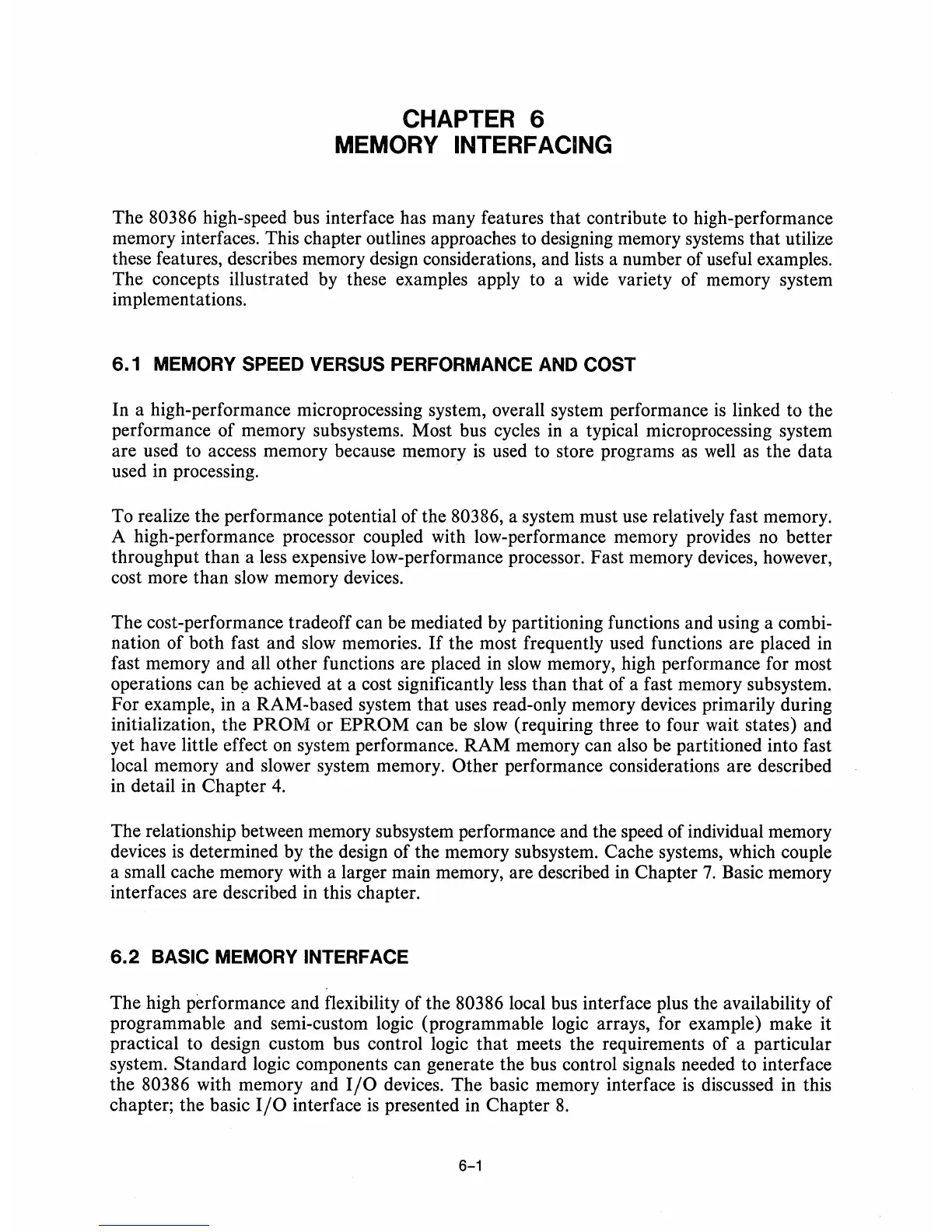CHAPTER 6
MEMORY INTERFACING
The 80386 high-speed bus interface has many features that contribute to high-performance
memory interfaces. This chapter outlines approaches to designing memory systems that utilize
these features, describes memory design considerations, and lists a number of useful examples.
The concepts illustrated by these examples apply to a wide variety of memory system
implementations.
6.1 MEMORY SPEED VERSUS PERFORMANCE
AND
COST
In a high-performance microprocessing system, overall system performance
is
linked to the
performance of memory subsystems. Most bus cycles
in
a typical microprocessing system
are used to access memory because memory
is
used to store programs as
well
as the data
used
in
processing.
To realize the performance potential of the 80386, a system must use relatively fast memory.
A high-performance processor coupled with low-performance memory provides
no
better
throughput than a less expensive low-performance processor. Fast memory devices, however,
cost more than
slow
memory devices.
The cost-performance tradeoff can be mediated by partitioning functions and using a combi-
nation
of
both fast and
slow
memories.
If
the most frequently used functions are placed
in
fast memory and all other functions are placed
in
slow
memory, high performance for most
operations can
b!!
achieved at a cost significantly less than that of a fast memory subsystem.
For example,
in
a RAM-based system that uses read-only memory devices primarily during
initialization, the
PROM
or EPROM can be
slow
(requiring three to four wait states) and
yet have little effect
on
system performance.
RAM
memory can also be partitioned into fast
local memory and slower system memory. Other performance considerations are described
in
detail
in
Chapter
4.
The relationship between memory subsystem performance and the speed of individual memory
devices
is
determined by the design of the memory subsystem. Cache systems, which couple
a small cache memory with a larger main memory, are described
in
Chapter
7.
Basic memory
interfaces are described
in
this chapter.
6.2
BASIC MEMORY INTERFACE
The high performance and flexibility of the 80386 local bus interface plus the availability of
programmable and semi-custom logic (programmable logic arrays, for example) make it
practical to design custom bus control logic that meets the requirements of a particular
system. Standard logic components can generate the bus control signals needed to interface
the 80386 with memory and
I/O
devices. The basic memory interface
is
discussed
in
this
chapter; the basic
I/O
interface
is
presented
in
Chapter
8.
6-1

